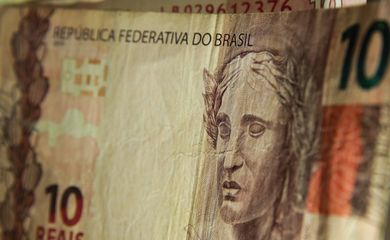
Inflation calculated by the Extended National Consumer Price Index (IPCA) should end this year at 10.2%, considering the interest rate (Selic) at 9.25% per year and the exchange starting at R$ 5.65. The information is in the Inflation Report , quarterly publication of the Central Bank (BC), released today (16). In the September report , the projection for inflation for the year was 8.5%.

In this scenario, inflation will be above the target that should be pursued by the BC. The target, defined by the National Monetary Council (CMN), is 3.75%, with a tolerance interval of 1.5 percentage points up or down. That is, the lower limit is 2.25% and the upper limit is 5.25%.
For 2022, the inflation projection is 4.7% and, for 2023, 3.2%. In this case, it assumes an interest rate trajectory that rises to 11.75% per annum during 2022, ending at 11.25% per annum, and reduces to 8% per annum in 2023.
Consumer inflation remains persistent and high, according to the BC. “There is concern about the magnitude and persistence of shocks, their possible secondary effects and the rise in inflation expectations, even beyond calendar year 2022,” says the report.
The target defined by the CMN for 2022 is 3.5% and for 2023 it is 3.25%, with a tolerance interval of 1.5 percentage points for the two years. In other words, under this scenario, inflation will be close to the upper limit in 2022 and the center of the target in 2023.
When considering the groups of free and administered prices, the BC highlights the high projection for the inflation of administered prices in 2021, of 16.7%. If the forecast comes true, it will be the highest inflation since 2015, when it reached 18.07%.
“The increases already seen in the prices of gasoline, bottled gas and electricity stand out. For 2022, the projection of managed companies is significantly reduced, mainly reflecting the dissipation of current shocks, the energy used flag and the recent drop in oil prices”, says the report.
On the other hand, according to the BC, free price inflation will reduce over time as the effects of the rise in the index dissipate and the trajectory of the real interest rate used is above the neutral rate (the one that does not generate changes in inflation). BC's projection for the Free IPCA in 2021 is 8%.
Inflation registered
In November, the IPCA was 0.95% , closing at the highest level for the month since 2015 (1.01%) and accumulating an increase of 10.74% in 12 months. In the year, until November, inflation is 9.26%.
The index is pressured, especially, by the increase in fuel prices. According to BC, items more associated with underlying inflation also contribute. “The pressure on the prices of industrial goods has not yet eased, while inflation in services is already higher, reflecting the gradual normalization of activity in the sector [very much impacted by the covid-19 pandemic],” says the report.
With the rise in inflation, last week the BC raised the Selic for the seventh consecutive time, from 7.75% to 9.25% per year, and should promote a new increase at the next Copom meeting, in February. The basic interest rate is the main instrument used by the Central Bank to reach the inflation target. The increase in the Selic, which serves as a reference for other interest rates in the country, helps to control inflation because it affects prices, as higher interest rates make credit more expensive and stimulate savings, avoiding heated demand.
Text translated using artificial intelligence.




